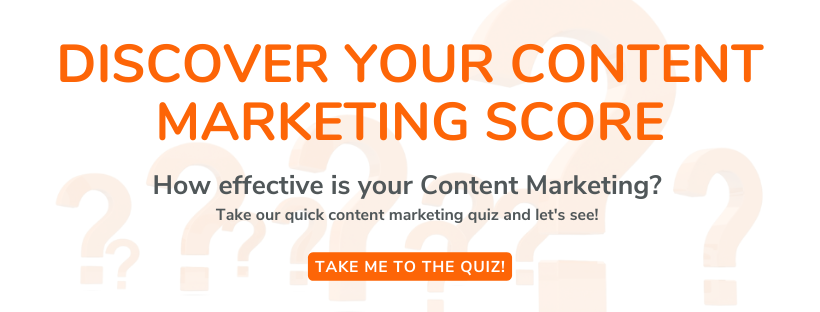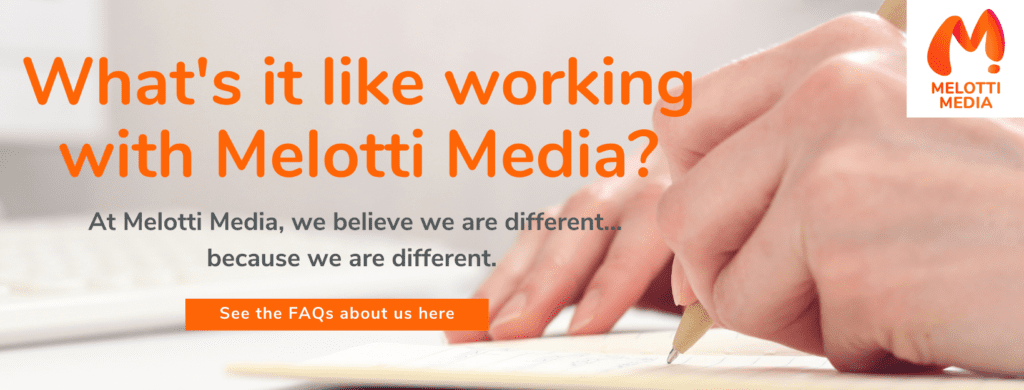
Prefer to listen, rather than read? Here's the Podcast summary!
Brands are everywhere today.
Colours, logos, fonts and messages. They trigger emotions and provoke a response from us as we navigate our lives and make relevant product and service choices.
But, what’s in a brand?
Or more importantly, do you need to develop a full brand for your business? Great question. Let’s answer it.

“Just a logo will do” … nope
So many businesses say this – and I understand where they’re coming from. However, they’re wrong.
A brand is so much more than a logo. That’s not me saying that. It’s your customers! Every single touch point, experience and interaction all influence how an audience interprets a brand. If your actions are bold, then you’re seen as bold. If your team are rude, then you’re labelled as rude.
This is literally why it’s important – no… essential – to establish and build your brand on your terms yourself first.
Without a deliberate brand, you end up with an accidental brand
If you don’t put any effort into solidifying your entire brand suite so that you’re communicating consistency and clear intention with your customers, then you’re leaving it completely up to them to interpret – and they will… and who knows what they’ll come up with.
Have a read of our free eBook: are you proud of what your brand is saying?
Here’s an example.
A business without a fully established brand
Consider this completely fictitious legal or accounting firm.

All they have is a logo. It’s a green circle with a shield. That’s all they’ve put effort into. Now, clients are left to their own devices when it comes to how they see and interpret this firm.
- The website is bland and unclear
- When comparing other firms, many appear to be exactly the same
- Their social media is vague or non-existent
- When calling the office, it’s always a different approach
- The articles, resources and collateral provided by the firm are compiled on a whim
Without a consistent and well-defined brand, potential leads and clients now have to piece together their own assumptions from their inconsistent experiences. Not something I can imagine the firm would want!
When people have to build their own impressions from an inconsistent business, it’s a pretty hard sell and a pretty irrelevant interaction.
A business WITH a fully established brand
Right – now we have the next fictitious legal or accounting firm.

They’re invested in a comprehensive brand – logos, fonts, messaging, tone of voice, personality and more.
In other words, they’ve taken the time to build a total brand direction so they can be deliberately consistent and thorough. Now, clients interpret all of the deliberate signals the firm is portraying intentionally, making their brand distinct, memorable and relevant.
- The website is clear and driven by a unique brand personality
- When comparing other firms, this one stands out easily for all the right reasons
- Their social media is distinct and consistent
- When calling the office, their team portray an intentional identity
- The articles, resources and collateral provided by the firm are aligned
This brand is remembered.
It makes a good impression and if you were to ask clients to describe it, they would be able to recall a lot from their memories as their experience was clear. All touchpoints were aligned.
It’s this kind of branding that makes your business relevant in a target audience’s mind.

That’s the difference between a non-brand and a full brand
So, where does your business sit between those examples above?
Has your team spent the time formulating how you want to be perceived? Or are you leaving it up to your audience to piece together fragments of unintentional touchpoints so that everyone has a different idea?
When no one can comprehend your brand’s position and definition, then you may as well be invisible.
That’s the risk of not developing all aspects of your brand.
The reality is, if you’re not leading your brand’s conversation and sending out a consistent signal to your audience, it’s just so easy to forget you. It’s also easy for even the slightest glitch to make up a big part of your brand’s image in their minds.
For instance, if you don’t set up, say, a prestige look and feel with the right photos, colours, fonts and tone of voice, then you probably won’t get it there. Worse, once your customers aren’t given the right intentional signals from you, it sticks and then it’s often too late without having to do a complete brand overhaul.

“But shouldn’t I let my brand speak for itself?”
Absolutely! But there’s a difference!
Speaking for itself works best when you’ve done all of the pre-work of establishing your brand’s direction first. Then, all of that orchestrated consistency allows customers, clients and the community to build a definite impression.
For example, if your marketing has a consistent tone, tag line, colour pallet and pricing approach, then people pull all of those signals together to come to the conclusion you want.
However, if you just let your brand evolve in uncontrolled ways, it ends up becoming a mixed bag of elements that are out of your control. If that brand is then left to speak for itself, you’ve got either something immemorable or worse, something you never intended.
Think of the major brands off the top of your head right now.
Apple, Disney, Coca-Cola, Mercedes Benz, Google, O’Brien Glass, IBM, Cadburys, MARVEL. What came to mind with each? Do you think their reputations were gained by accident? Or did they take control of that narrative so that you could gain a strong understanding of where they each wanted to be positioned?
Of course they did.
I’ve worked with several of these brands, and they’ve all given me a brand briefing of what to do and not to do before we even got to working together.
Naturally, every person has some variance in their mind, but it would be exceedingly rare for someone to think, say, that Apple is the same as DELL or that Ferrari is the same as Toyota.

A complete brand allows you to position it how you intend to
That’s essentially the power of a strong, well-conceived brand.
It gives you control over your brand’s direction and identity so you can present the right positioning to your target audience to be successful.
When you invest the time and the resources into a full brand guidelines (design + messaging) that includes all of the brand elements, below, then you can have true control over your distinction in the marketplace.
These are the brand basics you need to establish if you want your business to be successful:
– Core Messaging
– Hero Statements
– Elevator pitch
– Logos
– Colour pallet
– Fonts
– Core values
– Picture style
– Personality
– Tone of Voice
– Vision, Mission and Purpose
– Communication style
– Approach to audience segments
All of those brand elements are important
You may find yourself thinking: “what does a colour matter?” or “how does a font make a difference?”
A lot! Every minor detail makes a big impression on customers, especially when paired together. Test your friends out and ask them to identify a brand by its colour, the shape of its logo or its tagline. The brands they associate with will be clear in their minds.
It’s like when you do all of those mini-quizzes on social media and it asks: “which brand is this?”, showing you the red with the ribbon. Immediately, Coca-Cola.
Sure, your brand may not be as well-established and instantly recognisable as the soft drink giant, but they started at the same point you’re at now.
The reality is this: take control of your brand or else…
If you don’t take the time to establish your full brand, then you’re giving people space to forget or misinterpret you.
You’re setting people up to misunderstand, overlook or even substitute your brand for another.
You’re also not giving your team members the opportunity to align their work style with your brand’s direction too. Without a central brand guidelines that details the collective direction for everyone, then they can’t act in a way that then makes a consistent impression on your customers and audience too.
Ask yourself – can you afford to let your brand be vague without any intentional substance?
No business can.
So – how do you complete your brand?
That’s where our team at Melotti Media and some of our marketing partners can help you.
Together, we work with you to listen to your branding goals and priorities, and then conduct a strategy session to discuss your brand’s messaging, direction and more.
Let’s develop your full brand and give you the opportunity to reclaim control over it.
Melotti Media offers a Core Brand Messaging Development service
If you’ve decided it’s time to give your brand’s communications a much-needed tune-up to keep up with your customers, then we can help you.
At Melotti Media, we work closely with brands like yours, across all industries, sizes and niches, to help develop or sharpen your messaging to build a core messaging brand document.
To learn more, visit our Core Messaging Service page here for more information.
Or simply contact my team today.
Our message marketing copywriters and branding specialists can help you develop your core messaging. Simply email us at enquire@melottimedia.com.au or phone 1800 663 342.










